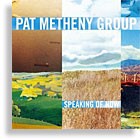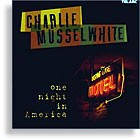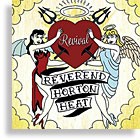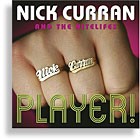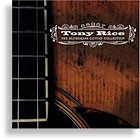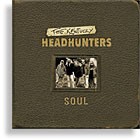George Alessandro and his amps have been high-profile for some time, and both are highly regarded.
Over the years, George has repaired, modified, and tweaked thousands of amps. What he’s most known for is the high-end guitar amps like the Bloodhound and Redbone, all hand-built and with tons of voicing options and cabs with nicely figured woods. True, stepping into an Alessandro has never been a prospect for the price-tag meek, but they are exemplary “get what you pay for” amplifiers.
Enter the Working Dogs, a new “budget” line of three hand-wired, point-to-point models built to the same quality standards as other Alessandro amps, but with an ease of assembly, non-hand-wound custom transformers, tolexed cabs, and vinyl logos that add up to low end-user cost.
The Boxer, the Rottweiler, and the Doberman are all available as stand-alone heads, or in combos with a variety of speaker configurations, and each has controls for volume, treble, middle, bass, reverb, and a Final Output Control knob. There’s also a very cool “Jangly”/”Creamy” voicing switch designed to complement the player’s pickup selection (single-coil vs. humbucker).
The Final Output Control varies the percentage of output power from 100 percent to 50 percent (on the Doberman, Alessandro says, it cuts power to about 35 percent). This feature is, in Alessandro’s words, “A master volume that works,” but given its history, he went out of his way to avoid using the “M” word. Whatever the label, the circuit is designed so that even when turned down all the way, the amp won’t make the buzzy sounds associated with a master volume.
The Boxer is a 20-watt amp featuring 6V6 output tubes. The Rottweiler is a 40-watter using 6L6s. The Doberman is a 40-watter using EL34s. Each uses two 12AX7 preamp/phase inverter tubes and a 12AT7 reverb tube, and a three-spring reverb in a high-impedance circuit.
For our test, we netted 1×12″ versions of the Boxer and Rottweiler with Jensen’s C12N, and a 1×12″ Doberman with Celestion’s neodymium-magnet G12 Century (a $100 upgrade). With their black tolex/black grillcloth scheme, the Dogs boast a simple beauty. And for all you working dogs, they’re lower-back friendly (weighing approximately 35 pounds). The top-loaded control panel is stainless steel and tastefully simple, with silkscreened block-letter labeling and chickenhead knobs.
Not surprisingly, a look inside reveals high-quality components including ceramic tube sockets, Teflon/silver wiring, and silver solder. Wiring is neat and road-ready.
For test guitars we used a 1959 Fender Esquire, an Ibanez Artist with Wolftone’s Greywolf humbucking pickups, and a stock ’72 Fender Stratocaster.
We started with the Esquire going into the Boxer. Plugging in, we straight away found the amp producing serious tone, with no knob-tweaking whatsoever. This, we knew, was going to be fun! Its spongey/springey tone was incredibly fat and sparkly, with just the right amount of breakup. The tone controls on all of the test Dogs were very reactive, allowing for a finely tuned dial-in that helped us create some of the best country-picker tone we’ve ever heard. The reverb was also very smooth. And fat rock tone was only a tweak of the controls away; we just pushed the Final Output, and were met by gobs of gain.
Next, we plugged the Esquire into the Rottweiler, set for clean. Tone-wise, it sounded much like the Boxer, but louder and a bit tighter, thanks to the Jensen C12N. If there’s an amp that compares, it’d be the classic Fender Vibrolux. But the versatility of this amp’s Final Output Control stage gives it a distinct advantage.
Next, we coupled the Doberman with the Esquire. The Doberman has the same tonality as the others, but its Celestion G12 speaker gives it a slightly fatter, slightly darker low-mid tone. It’s also louder and more solid than the Boxer, with plenty of gain when pushed.
For our blues/higher-gain playing-style switcheroo, we grabbed the humbucker-loaded Ibanez. Rolling back the bass and boosting the mids on each amp, we found optimum rock tone. Again, each demonstrated full, smooth, warm distortion that rivaled the tone of amps famous for their distortion.
The Boxer had the most gain, with slightly looser low-end. To smooth it out, we set the Jangly/Creamy toggle to Creamy on all three amps. The Doberman had the strongest low-mid response, with a more “British sound.” With the gain backed down and a couple minor tone adjustments, all three proffered intense blues tone.
Next, we plugged in the ’72 Strat, which proved an excellent match for the Doberman, in particular; some of the fattest Strat tone anywhere came from this setup, regardless of which pickup combination we used.
All three Working Dogs sound amazing, with any guitar and any settings. Each is super-responsive to player touch, from clean to high-gain. And with the responsive tone circuit, great sounds are readily available.
Alessandro’s Working Dogs are some of the best amps around, regardless of price. And given their price, they’ll indeed prove to be some of man’s best friends.
Alessandro Working Dog Boxer/Rottweiler/Doberman
Type of Amp All-tube Class A 1×12″ combos.
Features 20 watts output via two 6V6 tubes (Boxer), 40 watts output via two 6L6 (Rottweiler) or EL34 (Doberman) power tubes, point-to-point wiring, ceramic tube sockets, stainless steel chassis, Teflon silver soldered wiring, three-spring reverb.
Price $1,200, $1,300 w/Celestion G12 Century speaker.
Contact Alessandro High-End Products, phone (215) 355-6424, www.alessandro-products.com.
This article originally appeared in VG
‘s March ’04 issue. All copyrights are by the author and Vintage Guitar
magazine. Unauthorized replication or use is strictly prohibited.


